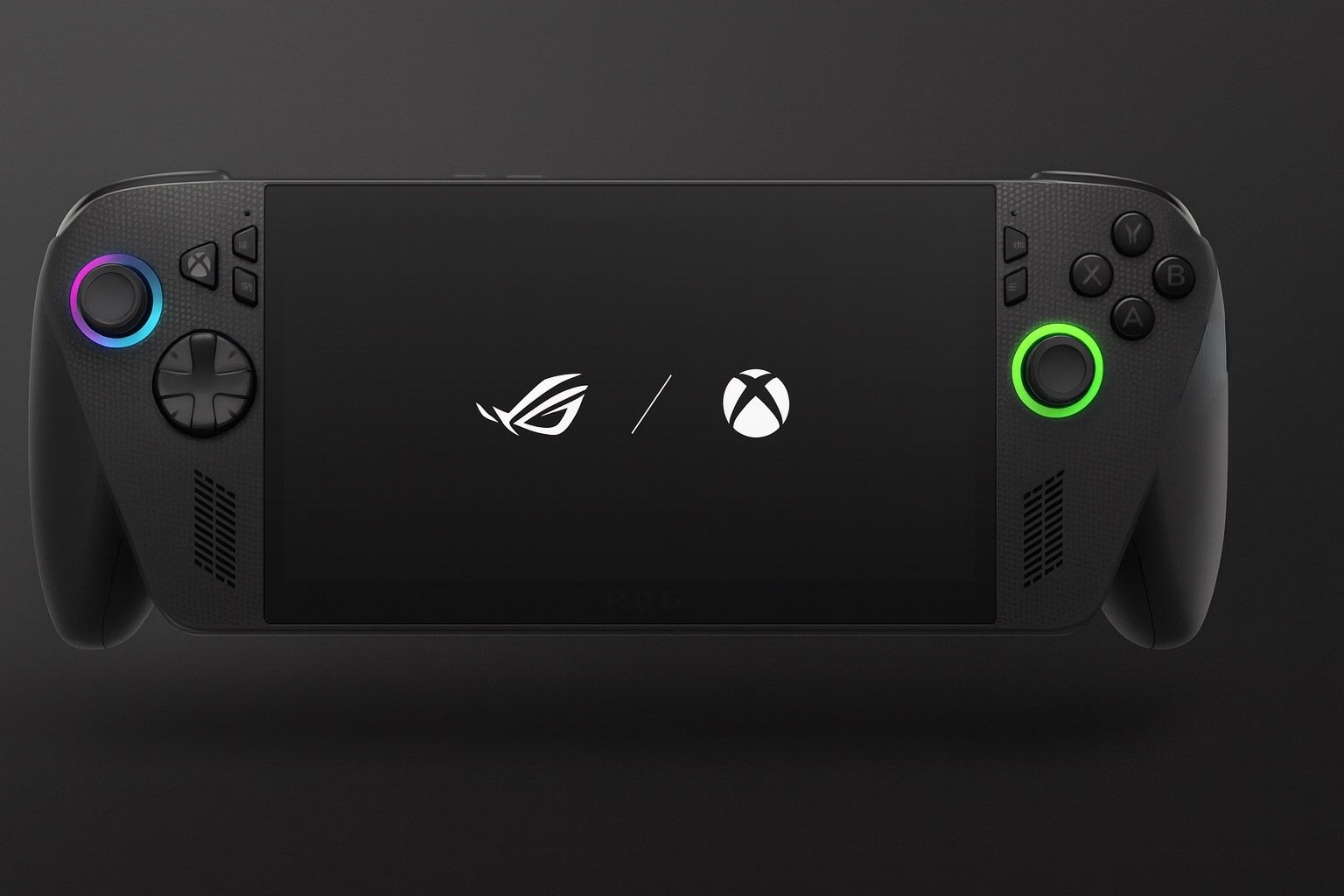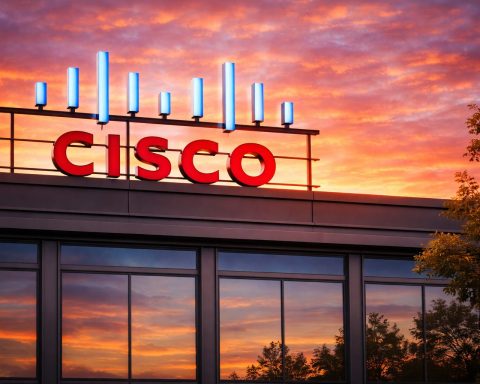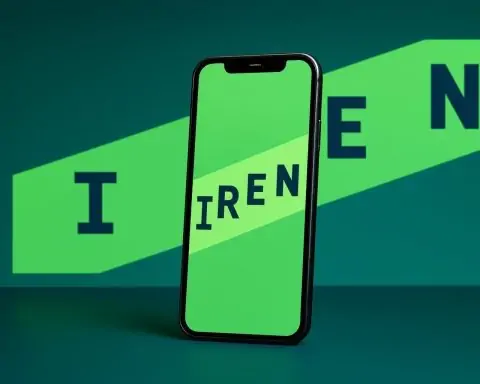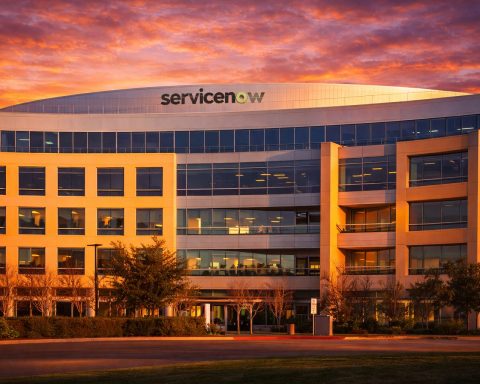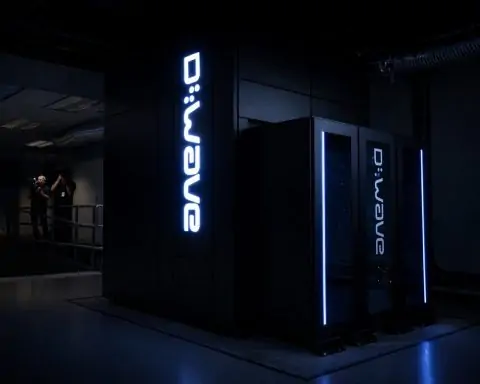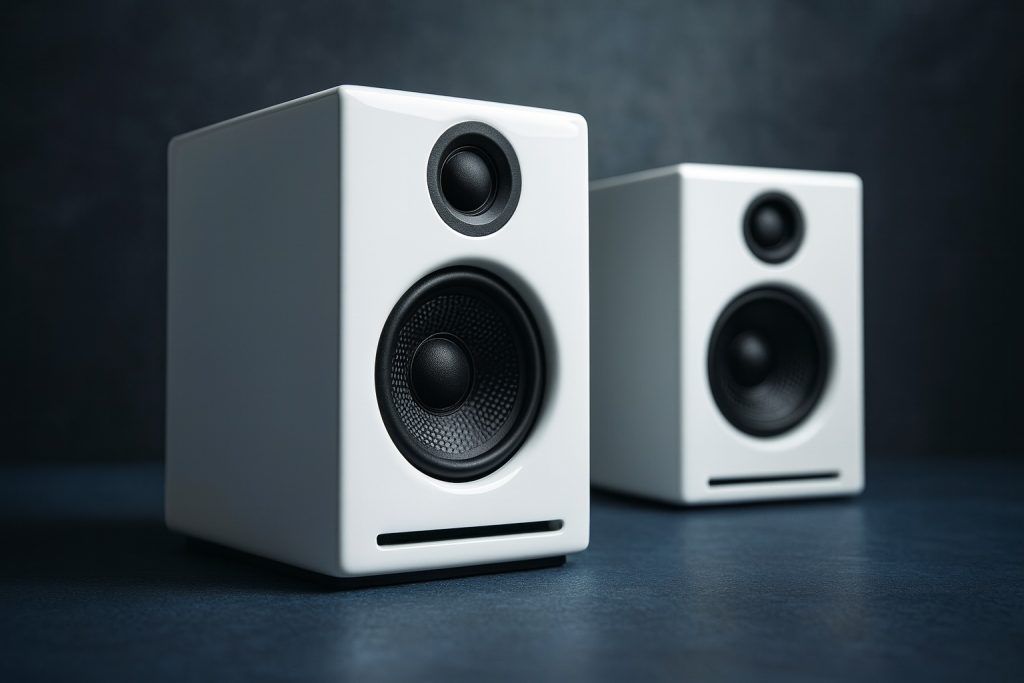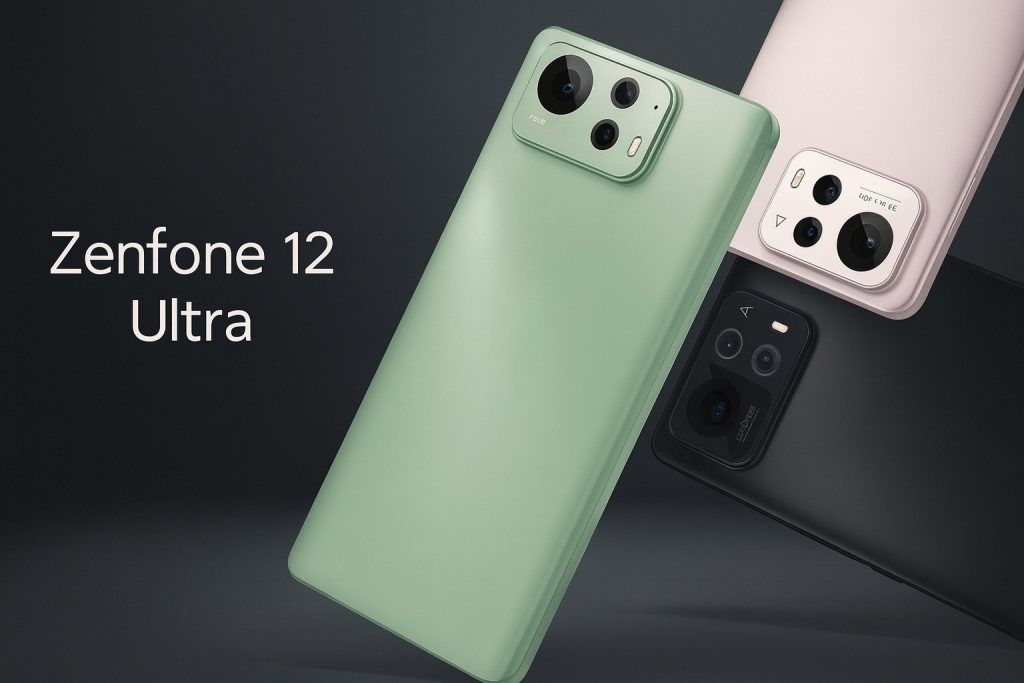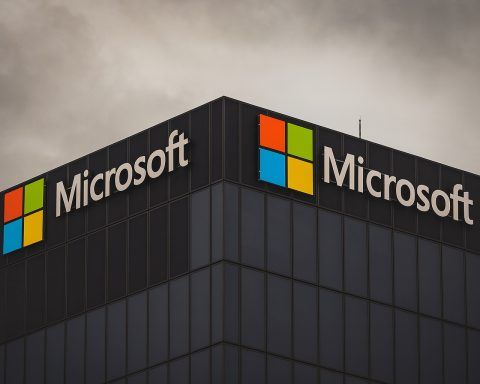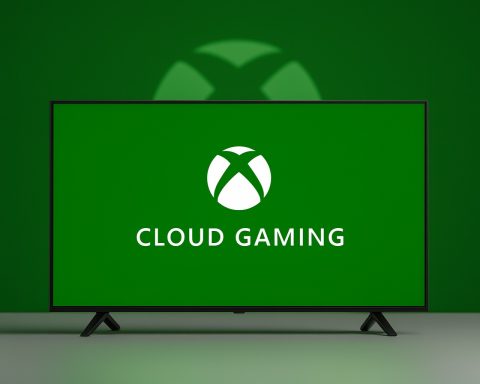- Microsoft’s First “Xbox” Handheld: Co-developed with ASUS, the Xbox Ally X is a Windows 11 gaming handheld (7-inch 1080p @120Hz display) that boots straight into an Xbox-themed interface for a console-like experience [1] [2]. It features familiar Xbox controller ergonomics and even impulse trigger haptics on the X model [3].
- Top-Tier Specs & Performance: Under the hood is AMD’s new Ryzen AI Z2 Extreme APU (8-core/16-thread CPU, 16 RDNA3 GPU cores, 15–35W TDP) with a built-in NPU for AI tasks [4]. The Ally X packs 24 GB LPDDR5X-8000 RAM, a 1 TB SSD, and a massive 80 Wh battery – double the capacity of many rivals [5] [6]. Early hands-on tests saw AAA games hitting 60 fps on this device (e.g. Gears of War: Reloaded at a smooth 60 fps) [7].
- Battery Life Boost: That 80 Wh battery (paired with AMD’s efficiency gains) aims to greatly extend playtime. It’s a huge jump from the original ROG Ally’s 40 Wh – expect roughly 2+ hours in heavy AAA games at full power (versus ~1 hour on the old model), with 3–6 hours possible on lighter loads or power-saver modes [8]. By comparison, Valve’s Steam Deck OLED uses a 50 Wh battery (up from 40 Wh) and can last up to ~8 hours on low settings [9] [10], but both high-end PC handhelds will hover ~2 hours for demanding titles.
- Price & Availability: The Xbox Ally X launches October 16, 2025 in over 30 regions (North America, Europe, Asia, etc.) [11] [12]. Pricing hasn’t been officially confirmed yet, but leaks peg the Ally X around $899 USD (and the standard “Ally” around $599) [13]. That’s pricier than a Steam Deck or Switch 2, but aligns with premium PC handhelds [14] [15]. Pre-orders were expected to open around Gamescom 2025 amid strong hype [16] [17].
- Public Reception & Reviews: Early impressions from gaming outlets have been very positive. Reviewers praise the ergonomic design – it’s bulkier and ~70 g heavier than a Steam Deck, but “as close to an Xbox controller as one can get” in handheld form [18] [19]. The grips and weight distribution make extended play comfortable [20]. The device feels exceptionally powerful for its size – “the handheld gaming PC to get,” as PC Gamer put it [21] – and runs quiet and cool thanks to improved cooling [22] [23]. However, some note that Windows 11 (even with Xbox’s new handheld mode) still isn’t as seamless as a console OS – early demo units had occasional UI crashes and hiccups that Microsoft is working to iron out [24] [25]. And of course, that premium price tag is a sticking point for many [26].
- Xbox Integration & Cloud Gaming: The Ally X’s custom Xbox Full Screen interface aggregates your Xbox library, Game Pass, Steam, Epic, Battle.net, etc., into one launcher [27]. A tap of the Xbox button pulls up an enhanced Game Bar overlay for quick access to performance stats, friends chat, and more [28] [29]. It natively plays PC games (including Play Anywhere titles that sync progress with Xbox consoles) and supports Xbox Cloud Gaming and Remote Play to stream console titles [30] [31]. Note: It cannot run Xbox Series X|S console games locally unless those games have a PC version – a limitation of being a Windows PC under the hood [32]. Microsoft’s new Handheld Compatibility Program helps identify games that are “Handheld Optimized” or “Mostly Compatible” on the Ally devices to minimize tweaking [33].
- Competitive Landscape: The Xbox Ally X enters a booming handheld market revitalized by Nintendo and Valve. Below we compare how it stacks up against current and upcoming rivals – from Valve’s popular Steam Deck (now with an OLED refresh) to new Windows handhelds like the ASUS ROG Ally line, Lenovo’s Legion Go, Nintendo’s next-gen Switch, and rumored Sony devices.
Specs Showdown: Xbox Ally X vs. The Competition
Before diving into head-to-head comparisons, here’s a quick look at how the Ally X’s core specs compare:
- Xbox Ally X (2025): AMD Ryzen Z2 Extreme 8C/16T CPU + 16 RDNA3 GPU CUs (plus AI NPU) [34]; 24 GB LPDDR5X-8000 RAM; 1 TB SSD; 7-inch 1080p 120 Hz IPS; 80 Wh battery [35]; ~678 g weight [36]; Windows 11 (Xbox handheld mode). Price: est. ~$899 [37].
- Xbox Ally (Standard “S” model, 2025): AMD Ryzen Z2 A 4C/8T CPU + 8 RDNA3 GPU CUs (no NPU) [38]; 16 GB RAM; 512 GB SSD; 7-inch 1080p 120 Hz; 60 Wh battery [39]; slightly lighter; same Xbox/Windows software. Price: est. ~$599 [40].
- ASUS ROG Ally (2023 original): AMD Ryzen Z1 Extreme 8C/16T + 12 RDNA3 CUs; 16 GB RAM; 512 GB SSD; 7-inch 1080p 120 Hz; 40 Wh battery [41]. Launched at $699 – a breakthrough at the time, though limited by short battery life [42]. (A 2024 refresh “ROG Ally X (2024)” added 24 GB RAM, 1 TB SSD, and an 80 Wh battery while keeping Z1 Extreme [43].)
- Valve Steam Deck (2022): AMD Aerith APU (4C/8T Zen2 CPU + 8 RDNA2 CUs); 16 GB RAM; 64–512 GB SSD models; 7-inch 800p 60 Hz LCD. Steam Deck OLED (late 2024) upgraded to a 7.4-inch OLED (1080p) and a larger 50 Wh battery for ~30% more life [44], but still uses the same older CPU/GPU. Runs SteamOS 3.0 (Linux-based). Price: $549 (256 GB OLED) up to $679 (1 TB limited edition) at launch [45].
- Lenovo Legion Go (2023): Windows handheld with Ryzen Z1 Extreme, 8.8-inch 2560×1600 144 Hz LCD, and detachable “Joy-Con” style controllers. Heftier at ~854 g, but offers Switch-like versatility with a built-in kickstand. 49 Wh battery (first gen) was a weakness at high TDP. Launched: late 2023 at ~$699. A Legion Go 2 is in development for late 2025, upgrading to Ryzen Z2 Extreme, up to 32 GB RAM, up to 2 TB SSD, and a bigger 74 Wh battery [46] [47]. Interestingly, Lenovo is shifting to an 8.8″ OLED screen (1920×1200 @144 Hz) on the Go 2 for better efficiency [48]. The Go 2 prototype is even larger (estimated ~1.08 kg!) due to the bigger battery and controllers [49].
- Nintendo Switch 2 (2025): Nintendo’s newest console-handheld hybrid launched June 2025 for $449 [50]. Rumored to use an NVIDIA Ada Lovelace-based chip for DLSS upscaling and ray tracing support, delivering leaps over the old Switch. It retains the Switch’s portable/dockable concept. Display: ~8-inch OLED, 1080p @ up to 120 Hz (unconfirmed, but speculation suggests an improved screen). Battery life is reported around 5–8 hours per charge – good for a console, but Switch 2 prioritizes exclusive games and efficient performance over raw power. In pure specs it’s far weaker than PC handhelds, but Nintendo’s first-party titles and lower price target a different market segment.
- Sony PlayStation (Portal & Beyond): In late 2023, Sony released the PlayStation Portal, but it’s not a true standalone – it’s a Remote Play streaming handheld for PS5 owners. Sony has otherwise stayed out of dedicated gaming portables since the PS Vita. However, industry chatter hints Sony might revisit a proper “PSP 2” around the time of the PS6 (circa 2027–2028) [51]. For now, Xbox’s Ally X and similar devices fill the high-end handheld niche that PlayStation fans are watching closely.
Next, we compare the Xbox Ally X against these contenders in key areas:
Xbox Ally X vs. Steam Deck OLED
Power vs. Platform: Valve’s Steam Deck (especially the refreshed OLED model) remains the Ally X’s most obvious competitor. Performance-wise, the Ally X handily outclasses the Steam Deck, thanks to a much newer CPU/GPU. The Deck’s custom AMD chip (Zen2 CPU, 8 older RDNA2 GPU units) can run last-gen games well, but struggles with recent AAA titles unless settings are turned down. In contrast, the Ally X’s Zen4-based Z2 Extreme with 16 RDNA3 CUs delivers far higher frame rates and fidelity – effectively bringing current-gen PC/console performance to a handheld [52]. Even the cheaper standard Ally (Z2 A) is expected to outperform the Steam Deck; a preview noted Forza Horizon 5 hit 60 fps on the base Ally “S” model, which “is very impressive” given the Deck usually hovers ~30 fps in that game [53].
Display: The Deck OLED’s new 7.4-inch HDR OLED screen offers vibrant colors and true blacks, narrowing the gap with premium devices. The Ally X uses a slightly smaller 7.0-inch IPS panel but at a faster 120 Hz refresh (the Deck is effectively 60 Hz). The Deck’s OLED has higher contrast, but the Ally X’s display is no slouch – 1080p resolution, 500 nits brightness, FreeSync VRR for tear-free high-FPS gaming [54]. Competitive gamers might favor the Ally’s 120 Hz for fast twitch titles, whereas the Deck’s OLED is about image richness. Both screens are 16:9 (Deck OLED reportedly moved to a native 1080p from the original’s 800p).
Battery Life: Valve addressed one of Steam Deck’s weaknesses by upping the battery to ~50 Wh in the OLED edition, claiming 30–50% longer playtime (3–12 hours range, up from 2–8 hours) [55] [56]. Still, the 80 Wh Ally X battery dwarfs it. In practice, the Ally X can run far more power-hungry games – so if you push it at max settings and 30+ W TDP, you’ll still drain in ~2 hours (similar to Deck under heavy load) [57]. But the key is flexibility: you can tune the Ally’s power profile. Lock it to 10–15 W for lighter indie games or emulation, and you could see 5+ hours, taking full advantage of that huge battery. The Steam Deck, running SteamOS, generally has excellent per-game optimization and upscaling that make efficient use of its lesser hardware. The Ally X’s Windows environment is more brute-force; it can simply afford to throw more watts around thanks to the larger battery (and better cooling). Ultimately, the Ally X offers more raw stamina at equivalent performance levels – but at peak performance both devices are limited by thermals and battery tech.
Software & UI: Here the philosophies differ greatly. The Steam Deck’s SteamOS is tailor-made for ease of use on a handheld – a console-like interface, suspend/resume, and seamless Steam library access. It’s often praised for “just working” for gaming, with minimal fiddling. The Ally X runs Windows 11 with an Xbox-flavored overlay. Microsoft has introduced a fullscreen Xbox dashboard and quick-switcher to make Windows more couch-friendly [58] [59]. This brings advantages – you’re not limited to Steam games, and you have the full PC flexibility (Epic, GOG, emulators, mods, productivity apps, etc.). But it also means more background overhead and complexity. Early reviewers love that Microsoft is “closing the usability gap” with things like unified libraries and an improved Game Bar [60] [61], but some remain cautious: preview units had a few crashes and rough edges in the new handheld UI, suggesting it’s not as mature as SteamOS yet [62]. Bottom line: If you value plug-and-play simplicity, the Steam Deck still holds an edge. If you want a no-compromises PC-in-your-palm, the Ally X delivers power and versatility that the Steam Deck can’t match – at a much higher price.
Value: Valve aggressively priced the Steam Deck ($399–$649 for the LCD models; $549+ for OLED), undercutting most Windows handhelds. The Ally X is expected around $899 – nearly double the cost of a mid-range Deck OLED [63]. Even factoring in the Ally’s higher specs, many gamers on a budget will find the Deck (or the base $599 Ally) a better value. That said, $899 for what is essentially a portable high-end gaming PC is not unreasonable to enthusiasts. It really comes down to budget and use-case: the Deck OLED is the better bang-for-buck for mainstream gaming, while the Ally X is an expensive performance luxury for those who want the absolute best handheld hardware in 2025.
Xbox Ally X vs. ASUS ROG Ally (2023)
Interestingly, the Xbox Ally X is essentially the successor to ASUS’s own ROG Ally line – in fact, it carries dual branding (“ROG Xbox Ally X”). ASUS’s original ROG Ally made waves in 2023 as a “Steam Deck killer” with Windows 11 and beefier silicon. It had the Z1 Extreme chip (8C/12CU) and launched at $699, but was hampered by a small battery and some software pains. The Ally X (2024 refresh) addressed many flaws: it doubled the RAM to 24 GB, doubled storage to 1 TB, and crucially doubled the battery to 80 Wh, while tweaking the grips and thermals [64] [65]. PC Gamer’s review of that 2024 ROG Ally X praised its quiet cooling, slightly higher performance, and comfort despite a bit of extra weight, deeming it “just brilliant” [66] [67]. The main drawback remained Windows itself (not very touch-friendly) and the price premium [68].
The Xbox Ally X (2025) builds directly on that foundation. Internally, it swaps the older Z1 Extreme for the new Ryzen Z2 Extreme with AI NPU, yielding another jump in graphics horsepower and efficiency [69]. The co-branding with Xbox doesn’t mean radically different hardware from ASUS’s side, but it does mean native Xbox integration out of the box – something original ROG Ally owners will get via software updates too, albeit possibly not all features. Microsoft calls the Ally X a “bona fide successor” to the first-gen devices, emphasizing it as a new era of collaboration [70] [71].
Key differences: If you already have a 2024 ROG Ally X, the 2025 model’s main advantages are the faster APU (with AI upscaling and future features), the impulse-trigger haptics, and the refined Xbox software layer. The RAM (24 GB) and battery (80 Wh) are similar, and the chassis design is only slightly updated (Xbox-green accents, etc.). For owners of the 2023 original Ally, though, the new Ally X is a huge upgrade in every way – you get a far better battery, more memory, and all the new tech. In fact, Microsoft confirmed that while the old models will receive the Xbox UI update, some features (like the AI-powered enhancements) will be exclusive to devices with the Ryzen Z2 Extreme NPU [72] [73].
In short, the Ally X represents the evolution of the ROG Ally into a more console-like experience. It fixes earlier flaws (battery life, library integration) while pushing performance even higher. The trade-off, as before, is cost: at $800–900, it’s pricier than the 2023 Ally’s launch and nearly the cost of a full gaming laptop. But for the target audience – enthusiasts who embraced the ROG Ally – the Xbox Ally X is positioned as the new king of Windows handhelds. As one NeoGAF user succinctly put it, “more and faster memory and double the battery… simply the best handheld gaming PC on the market right now” [74]. That sentiment seems to be shared by many who have gone hands-on with it.
Xbox Ally X vs. Lenovo Legion Go / Go 2
Lenovo entered the handheld race in late 2023 with the Legion Go, a unique spin that tried to combine the best of Steam Deck and Switch in a Windows device. The Legion Go’s defining features were its detachable controllers (à la Nintendo Switch Joy-Cons) and a big 8.8″ QHD+ screen. It also had an innovative “FPS mode” where one controller could act as a vertical mouse for shooter games when detached. In practice, the Legion Go earned praise for ambition – the large high-res display and versatility – but it also drew criticism for its bulk (740–850 g) and suboptimal battery life pushing that 2560×1600 screen [75] [76]. Running an identical Ryzen Z1 Extreme as the Ally, it was hard-pressed to drive many games at native 1440p without using up battery quickly. Lenovo’s software (Legion Space) was also less mature than ASUS’s Armoury Crate.
Legion Go vs Ally X: The Ally X has a more compact 7″ form factor optimized for handheld use, whereas the Legion Go went for sheer size and modularity. If you value a larger display or detachable pads (for tabletop play or one-handed controller use), the Legion has that niche covered – but the Ally X’s smaller screen is sharper at 1080p and easier on the GPU. The Ally X also utterly wins on battery (80 Wh vs 49 Wh in Legion Go 1) and on portability. Both run Windows 11, so they share similar strengths (flexibility) and weaknesses (UI overhead). The Ally X’s new CPU likely outperforms the Legion Go’s older chip by a decent margin, especially in GPU-bound scenarios or when using features like AMD’s Fluid Motion Frames (AFMF) which the Z2 Extreme supports natively [77] [78].
Lenovo isn’t sitting still, though. At CES 2025 they unveiled a prototype of the Legion Go 2, which upgrades to the same Ryzen Z2 Extreme platform as the Ally X, paired with up to 32 GB RAM, 2 TB SSD, and a 74 Wh battery [79] [80]. Notably, they downgraded the Go 2’s resolution to 1920×1200 (16:10) to improve performance – a wise move given the first gen struggled at 1440p [81]. The Go 2 will also use a portrait-oriented 8.8″ OLED (rotated to landscape in the chassis), with 144 Hz refresh and HDR support [82]. Essentially, Lenovo is aligning the Go 2’s spec sheet very closely with the Ally X (same chip, similar battery size, OLED screen) but in a larger, modular form factor.
One big difference is weight – the Legion Go 2 is expected to be massive (over 1 kg) [83], given the bigger screen and detachable controllers. That’s nearly double the weight of the Ally X (~0.68 kg). Ergonomics may therefore skew in favor of the Ally for pure handheld comfort, whereas the Legion is almost a portable mini-console meant to be propped up or rested on something.
Verdict: If you prefer an all-in-one, controller-fixed design (more rigid, less cumbersome) – the Ally X is the better choice, refined by Microsoft/ASUS for comfort [84] [85]. If you want a Switch-like experience on PC, the Legion Go series offers features the Ally can’t (removable controllers, a kickstand, even AR/VR potential by splitting the controllers). Performance between Ally X and Legion Go 2 will be very close since they share silicon. We’ll have to see if Lenovo can optimize thermals to let the Z2 Extreme stretch its legs as much as ASUS does. But given its huge size, the Legion Go 2 might even manage higher sustained clocks (with more surface to dissipate heat), potentially edging out the Ally X in benchmarking – at the cost of true portability. Pricing for Legion Go 2 is unannounced, but the first gen was $699; expect the new one to land similar or higher (especially if configurations with 32 GB RAM are offered).
In summary, Lenovo’s Legion and the Ally X are both high-end Windows handhelds aimed at enthusiasts. The Ally X focuses on sleek power in a traditional handheld form, while the Legion Go explores modularity and size. Depending on whether you prioritize ergonomics or extra features like a bigger OLED and detachable pads, you’ll lean one way or the other. But there’s no denying the Ally X’s appeal as a more refined, balanced device versus the Legion’s “big and bold” approach.
Xbox Ally X vs. Nintendo Switch 2
Comparing the Ally X to Nintendo’s Switch 2 is almost an “apples vs. oranges” scenario – they cater to different audiences, but some overlap exists in the handheld gaming space. The Switch 2 (released in 2025) costs roughly half the price of an Ally X [86], and for that you get a very different experience: Nintendo’s platform is all about exclusive first-party games, simplicity, and family-friendly design.
Performance: The Switch 2’s exact specs aren’t officially public, but it’s widely reported to use a custom NVIDIA system-on-chip capable of DLSS upscaling and ray-traced graphics, bringing it closer to PS5/Xbox Series visual quality on the small screen. Even so, it won’t approach the raw performance of an Ally X – think of the Switch 2 as roughly current-gen console power when docked (thanks to DLSS), but closer to last-gen (PS4 Pro level) in handheld mode without upscaling. The Ally X, on the other hand, is a full-blown PC that can run cutting-edge PC games (albeit at lower settings than a desktop with a big GPU). In third-party titles, the Ally X will run circles around the Switch 2’s performance. But Nintendo’s exclusive games are heavily optimized for their hardware, and you won’t find Mario, Zelda, Pokémon, etc., on any other device. For many gamers, that alone makes a Switch 2 a must-have alongside (or instead of) a PC handheld.
Display & Form: Both are handhelds with ~7–8 inch displays. The Switch 2 reportedly continues with an OLED screen (the Switch OLED’s 7″ was gorgeous), likely around 1080p. The Ally X’s 1080p IPS is sharp, but OLED will have the edge in contrast. The Switch is also expected to maintain ~Joy-Con controllers and TV dock compatibility. This modular approach means a Switch can instantly become a living room console – something the Ally X can only emulate via docking to a monitor/TV and connecting controllers separately. The Ally X does have an advantage of built-in Xbox controller layout with all buttons in one unit, which core gamers may find more comfortable than Joy-Cons for long sessions (those with larger hands often buy a “Pro Controller” or grips for Switch).
Battery and Portability: Nintendo typically optimizes for decent battery life – the Switch 2 should get ~5–8 hours on a charge in most games (similar to the OLED Switch) thanks to efficient hardware and lower power draw relative to a PC. The Ally X, as discussed, can drain in 2–3 hours under heavy use, because it’s pushing much more powerful components. The Ally is also heavier (nearly 1.5 lbs vs ~.9 lb for a Switch with Joy-Cons attached). So for younger gamers or those who play primarily on the move, the Switch is the lighter, longer-lasting pick.
Game Library: This is perhaps the biggest differentiator. With Ally X you have the vast PC library – thousands of games across Steam, Epic, Game Pass, emulators for retro consoles, etc. You also can stream Xbox console games. But you cannot play Nintendo’s games on it (at least not legally – Switch emulation on PC is a grey area that requires dumping your own game files, and the Ally certainly has the power for emulators, but that’s beyond official use). The Switch 2 by contrast is the only place to play upcoming Nintendo exclusives. If your priority is Mario Kart, Smash Bros, Zelda, Metroid, Animal Crossing, and the like, an Ally X won’t help you – you need a Switch. Conversely, if you want to play the latest PC titles like Starfield, Baldur’s Gate 3, or Cyberpunk 2077 on a handheld, the Switch 2’s mobile chip won’t cut it – you’d want something like the Ally X.
In conclusion, the Switch 2 is the mainstream, family-oriented device, great for casual play and Nintendo fans, while the Xbox Ally X is a hardcore enthusiast’s device for high-end gaming on the go. Many gamers might own both: the Switch for exclusives and couch multiplayer, and the Ally X (or a Steam Deck) for the wide world of PC gaming. It’s not necessarily an either/or choice if one’s budget allows. But if it is an either/or: choose Switch 2 for the unique games and ease of use; choose Ally X if you crave cutting-edge performance, modding, and a “gaming PC in your hands” experience.
Upcoming and Rumored Handhelds (Sony and Microsoft’s Next Moves)
Beyond the competitors above, there are a few other players to mention:
- Sony’s PlayStation Portal & “PSP 2” Rumors: Sony’s recent PlayStation Portal (launched late 2023) is more of a PS5 accessory – it streams games from your console via Wi-Fi, and cannot run games natively. It’s a niche device for remote play, not a general-purpose handheld. Looking forward, rumors suggest Sony might be eyeing a true successor to the PSP/PS Vita in the late 2020s, possibly alongside the PlayStation 6 launch [87]. If that happens, it could re-ignite the classic console handheld wars. Until then, Sony seems content relying on the PS5 and cloud streaming rather than making a dedicated gaming portable. For Xbox fans, that’s partly why the Ally exists – Microsoft saw Nintendo and Valve succeeding in handhelds and likely wanted an answer without diving into hardware themselves.
- Other Windows Handhelds (Ayaneo, GPD, MSI, etc.): The PC gaming handheld market has exploded with boutique brands. Companies like AYANEO, GPD, OneXPlayer and others have numerous models – often using the same AMD chips – targeting enthusiasts willing to import niche devices. For example, Ayaneo’s high-end models (like the AYANEO 2S or Kun) offer OLED screens and fancy features, but often cost $1,000+. MSI even showed a prototype called the MSI Clutch A8 with a Ryzen Z2 Extreme at Computex, indicating big PC OEMs are interested [88]. While these are interesting, none have the ecosystem backing that the Xbox Ally does. Microsoft partnering with ASUS legitimizes the space and provides a level of polish (and global distribution) that smaller players lack.
- Microsoft’s Future Xbox Handhelds?: It’s worth noting that Microsoft itself has not released a first-party “Xbox Portable” hardware – instead, they’ve effectively adopted the Windows handheld ecosystem (with ASUS as the premier partner) as the de facto Xbox handheld solution. Internal reports suggest Microsoft had prototyped handheld modes and even considered hardware in the past, but they ultimately decided to leverage Windows devices for this [89]. The Xbox Ally X is described as “the first step into a wider handheld world for Microsoft” [90]. Microsoft will undoubtedly watch how the Ally devices perform in the market. If they’re a success, we could see more Xbox-branded handhelds (perhaps from other OEM partners or future ASUS models). If they struggle, Microsoft might pivot back to focusing on cloud gaming on phones, etc. For now, the Ally X and its standard sibling are the Xbox handheld lineup. Microsoft has explicitly “side-lined its own first-party Xbox handheld” in favor of this collaboration [91], so don’t expect an “Xbox Series P” (portable) device any time soon beyond the Ally family.
Xbox Ally X: Strengths and Weaknesses
Finally, let’s sum up where the Xbox Ally X shines and where it falters, especially in relation to the competition:
Strengths:
- Class-Leading Performance: With the Ryzen Z2 Extreme, 24 GB RAM, and high-speed SSD, the Ally X is the most powerful handheld gaming device of 2025 in raw specs. It can play modern AAA titles at higher settings and frame rates than competitors like Steam Deck or Switch 2 [92]. Early testers were impressed to see demanding games running smoothly (60 fps in Gears Reloaded, ~50 fps in Lies of P) on a handheld [93]. This performance headroom also makes it more “future-proof” for the next few years of game releases.
- Huge Battery & Solid Thermals: The 80 Wh battery is industry-leading, giving the Ally X longer untethered playtime than other performance handhelds [94]. Combined with efficient 4 nm silicon and ASUS’s robust cooling (dual-fan “Zero Gravity” cooling design), it manages to keep noise and heat in check while delivering high fps [95] [96]. Reviewers noted the fan stays “nice and quiet” even under load [97].
- Ergonomics & Build Quality: Microsoft and ASUS nailed the design from a comfort perspective. The Ally X has grips and contours inspired by the Xbox controller, making it very comfortable to hold for extended sessions [98] [99]. The weight (≈1.5 lbs) is balanced well, so it “feels a lot lighter than it should on paper” [100]. Buttons, sticks, and triggers are high quality (with the X model’s impulse triggers adding immersion). Unlike many smaller brands, this device feels polished and durable – more akin to a first-party console build.
- Xbox Ecosystem & Windows Flexibility: This is the only handheld with full Xbox integration. It boots into an Xbox dashboard, supports Quick Resume-like features for switching games, and merges multiple game libraries in one UI [101] [102]. For someone deep in the Xbox/Game Pass ecosystem, that’s huge – your Game Pass PC titles, cloud streaming, and even Remote Play from your Xbox console are all available on one portable device [103] [104]. And being a Windows PC, it’s incredibly versatile: you can install Steam, Epic, emulators, Discord, mods – basically anything you’d do on a gaming laptop. Neither Switch nor Steam Deck (with SteamOS) can match that breadth of functionality.
- Innovative Features (AI & More): Thanks to the AMD AI NPU, the Ally X is “first AI-powered handheld” [105]. Microsoft has announced features like Auto HDR and Auto Resolution (AI upscaling) that can boost visuals/frame rates system-wide using the NPU [106]. There’s also an AI “Gaming Copilot” in development to assist players with tips and highlights [107] [108]. While these are forward-looking (many coming in 2026 via updates), it highlights that the Ally X is not just a static device – it’s positioned to evolve with new software capabilities over time [109]. It also supports accessories like the ROG XG Mobile eGPU (via USB4/TB4 port) to turn it into a desktop-class machine when docked, if desired. This kind of upgradability and AI-driven enhancement sets it apart from most competitors.
Weaknesses:
- High Price Tag: The Ally X’s biggest downside is its premium pricing. At nearly $900 (plus tax) for the top model [110], it costs more than a PS5 and Switch 2 combined. Even the base Ally is ~$599, above the Steam Deck’s base price. This will be a deal-breaker for many casual gamers. The value proposition is debatable – you’re paying a lot for cutting-edge portability. As PC Gamer noted, it’s “expensive compared to the Steam Deck” [111]. For the cost-conscious, devices like the Deck or even a gaming laptop might make more sense.
- Windows 11 Quirks: While powerful, Windows is still a double-edged sword on a handheld. The custom Xbox interface is promising, but in previews it wasn’t fully stable (crashes and hangs occurred) [112]. There’s a risk that on launch, the software might feel a bit beta-quality. And outside the Xbox shell, you still have desktop Windows lurking – small text, hit-or-miss touch support, background processes consuming resources, etc. Valve’s SteamOS is more seamless for gaming-only use. So the Ally X may require more tinkering, driver updates, and occasional keyboard/mouse usage to deal with Windows quirks. Microsoft is actively refining the experience, but buyer beware that it’s not as appliance-like as a console or Switch.
- Weight and Size (vs. Switch/others): Though ergonomically designed, the Ally X is undeniably a chunky device. 680 g might not sound bad, but it’s over 50% heavier than a Nintendo Switch, and larger too. Younger kids might find it too heavy to hold for long. It also won’t slip into a small bag as easily – it’s more akin to carrying a tablet with controllers attached. Devices like the Aya Neo Air or even the Switch Lite are much more compact (but far less powerful). So, portability is relative – this is portable compared to a gaming laptop, but not pocketable by any means.
- Limited Console Game Compatibility: It’s worth reiterating – despite the Xbox branding, this is not a true Xbox console. It can’t run Xbox Series X|S games unless those games have a Windows PC version (or you stream them). Some big console exclusives (especially Sony’s, but even some Xbox titles that are console-only) won’t run on the Ally X. For example, if a third-party game isn’t on PC, you can’t play it here. In contrast, a Steam Deck can at least stream those via cloud or remote play as well, and a Switch has its exclusives. This isn’t so much a flaw of the device as a reality of the software platform, but buyers should understand the distinction. The Ally X is a complement to an Xbox console, not a replacement – it extends your Xbox experience to more places, but doesn’t fully replicate a console’s plug-and-play access to every Xbox title (unless xCloud streaming is used, which depends on internet quality).
- Competition & Market Unproven: Lastly, the Ally X enters somewhat uncharted territory – the high-end handheld PC market is still niche. The Steam Deck sold a few million units, proving demand exists, but devices priced near $1k (like AYANEO’s) have a much smaller audience. It’s unclear how large the market is for an “Xbox portable” at this price. If sales are soft, there could be shorter support or fewer accessories made, etc. Also, by late 2025 or 2026, we may see a true Steam Deck 2 or other entrants that leapfrog the Ally X. Technology moves fast, and the Ally X could be surpassed in a year or two. Early adopters always face this risk.
Overall, the Xbox Ally X is an impressive milestone: it proves that a handheld can deliver an almost Xbox Series X-quality gaming experience on the go [113]. It excels in power, features, and ecosystem integration. But it’s also a luxury device with some growing pains (in software) and a price that will limit it to hardcore gamers. If you’re the target demographic – someone who loves high-end PC gaming, values portability, and is invested in Xbox/PC game libraries – the Ally X could be a dream gadget that “makes you feel jealous,” as one GameSpot editor admitted after trying it [114]. On the other hand, if you just want casual on-the-go gaming or a cheaper device for indie and retro games, options like the Steam Deck or Switch make more practical sense.
The good news is that we now have a spectrum of handheld gaming choices: from Nintendo’s accessible consoles to Valve’s open PC platform to Microsoft/ASUS’s powerhouse. The Xbox Ally X has effectively kicked off a new era of handheld competition, and that only bodes well for gamers. Whether it becomes a breakout hit or a niche enthusiast favorite, it has undoubtedly raised the bar for what a portable console can be.
Sources: Official Xbox Wire announcement [115] [116]; ASUS ROG Ally X product page [117] [118]; HotHardware coverage [119] [120]; GameSpot and Windows Central hands-on reviews [121] [122]; PC Gamer and GosuGamers reports [123] [124]; The Shortcut and leaked info on pricing [125] [126]; Lenovo Legion Go 2 teaser [127] [128]; Steam Deck OLED details [129]; and more. Each provides additional context on the Xbox Ally X’s specs, reception, and place in the current gaming landscape. [130] [131] [132] [133]
References
1. www.theshortcut.com, 2. hothardware.com, 3. hothardware.com, 4. hothardware.com, 5. news.xbox.com, 6. hothardware.com, 7. www.windowscentral.com, 8. www.windowscentral.com, 9. www.pcgamer.com, 10. gearsrealm.com, 11. news.xbox.com, 12. hothardware.com, 13. www.windowscentral.com, 14. www.gosugamers.net, 15. www.theshortcut.com, 16. www.theshortcut.com, 17. www.theshortcut.com, 18. www.windowscentral.com, 19. www.pcgamer.com, 20. www.gamespot.com, 21. www.pcgamer.com, 22. www.gamespot.com, 23. www.pcgamer.com, 24. www.windowscentral.com, 25. www.windowscentral.com, 26. www.pcgamer.com, 27. www.gamespot.com, 28. news.xbox.com, 29. www.gamespot.com, 30. news.xbox.com, 31. news.xbox.com, 32. www.windowscentral.com, 33. news.xbox.com, 34. hothardware.com, 35. hothardware.com, 36. www.pcgamer.com, 37. www.windowscentral.com, 38. hothardware.com, 39. hothardware.com, 40. www.windowscentral.com, 41. www.gosugamers.net, 42. www.gosugamers.net, 43. www.gosugamers.net, 44. www.pcgamer.com, 45. x.com, 46. legiongolife.com, 47. legiongolife.com, 48. legiongolife.com, 49. legiongolife.com, 50. www.theshortcut.com, 51. www.theshortcut.com, 52. www.windowscentral.com, 53. www.windowscentral.com, 54. hothardware.com, 55. www.pcgamer.com, 56. gearsrealm.com, 57. www.windowscentral.com, 58. www.windowscentral.com, 59. www.windowscentral.com, 60. www.gamespot.com, 61. www.gamespot.com, 62. www.windowscentral.com, 63. www.windowscentral.com, 64. www.gosugamers.net, 65. www.pcgamer.com, 66. www.pcgamer.com, 67. www.pcgamer.com, 68. www.pcgamer.com, 69. hothardware.com, 70. www.pcgamer.com, 71. www.pcgamer.com, 72. www.gosugamers.net, 73. news.xbox.com, 74. www.neogaf.com, 75. legiongolife.com, 76. legiongolife.com, 77. rog.asus.com, 78. rog.asus.com, 79. legiongolife.com, 80. legiongolife.com, 81. legiongolife.com, 82. legiongolife.com, 83. legiongolife.com, 84. www.windowscentral.com, 85. www.windowscentral.com, 86. www.theshortcut.com, 87. www.theshortcut.com, 88. www.pcgamer.com, 89. www.windowscentral.com, 90. www.windowscentral.com, 91. www.windowscentral.com, 92. www.windowscentral.com, 93. www.windowscentral.com, 94. www.gosugamers.net, 95. www.gamespot.com, 96. www.pcgamer.com, 97. www.gamespot.com, 98. www.windowscentral.com, 99. www.windowscentral.com, 100. www.windowscentral.com, 101. www.gamespot.com, 102. www.gamespot.com, 103. news.xbox.com, 104. news.xbox.com, 105. rog.asus.com, 106. news.xbox.com, 107. news.xbox.com, 108. news.xbox.com, 109. news.xbox.com, 110. www.windowscentral.com, 111. www.pcgamer.com, 112. www.windowscentral.com, 113. www.windowscentral.com, 114. www.gamespot.com, 115. news.xbox.com, 116. news.xbox.com, 117. rog.asus.com, 118. hothardware.com, 119. hothardware.com, 120. hothardware.com, 121. www.gamespot.com, 122. www.windowscentral.com, 123. www.pcgamer.com, 124. www.gosugamers.net, 125. www.theshortcut.com, 126. www.windowscentral.com, 127. legiongolife.com, 128. legiongolife.com, 129. www.pcgamer.com, 130. news.xbox.com, 131. www.windowscentral.com, 132. www.windowscentral.com, 133. hothardware.com
